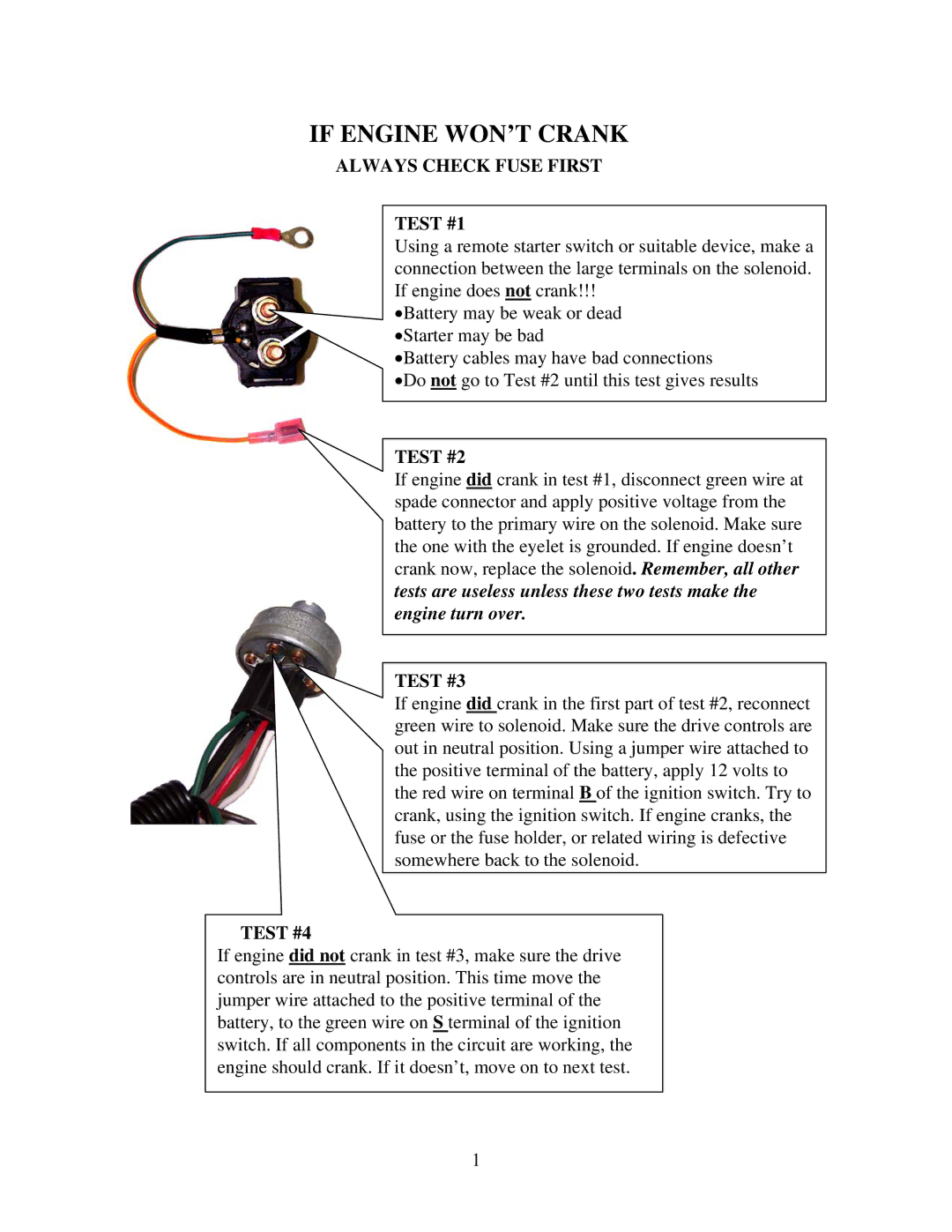
IF ENGINE WON’T CRANK
ALWAYS CHECK FUSE FIRST
TEST #1
Using a remote starter switch or suitable device, make a connection between the large terminals on the solenoid. If engine does not crank!!!
•Battery may be weak or dead
•Starter may be bad
•Battery cables may have bad connections
•Do not go to Test #2 until this test gives results
TEST #2
If engine did crank in test #1, disconnect green wire at spade connector and apply positive voltage from the battery to the primary wire on the solenoid. Make sure the one with the eyelet is grounded. If engine doesn’t crank now, replace the solenoid. Remember, all other tests are useless unless these two tests make the engine turn over.
TEST #3
If engine did crank in the first part of test #2, reconnect green wire to solenoid. Make sure the drive controls are out in neutral position. Using a jumper wire attached to the positive terminal of the battery, apply 12 volts to the red wire on terminal B of the ignition switch. Try to crank, using the ignition switch. If engine cranks, the fuse or the fuse holder, or related wiring is defective somewhere back to the solenoid.
TEST #4
If engine did not crank in test #3, make sure the drive controls are in neutral position. This time move the jumper wire attached to the positive terminal of the battery, to the green wire on S terminal of the ignition switch. If all components in the circuit are working, the engine should crank. If it doesn’t, move on to next test.
1
